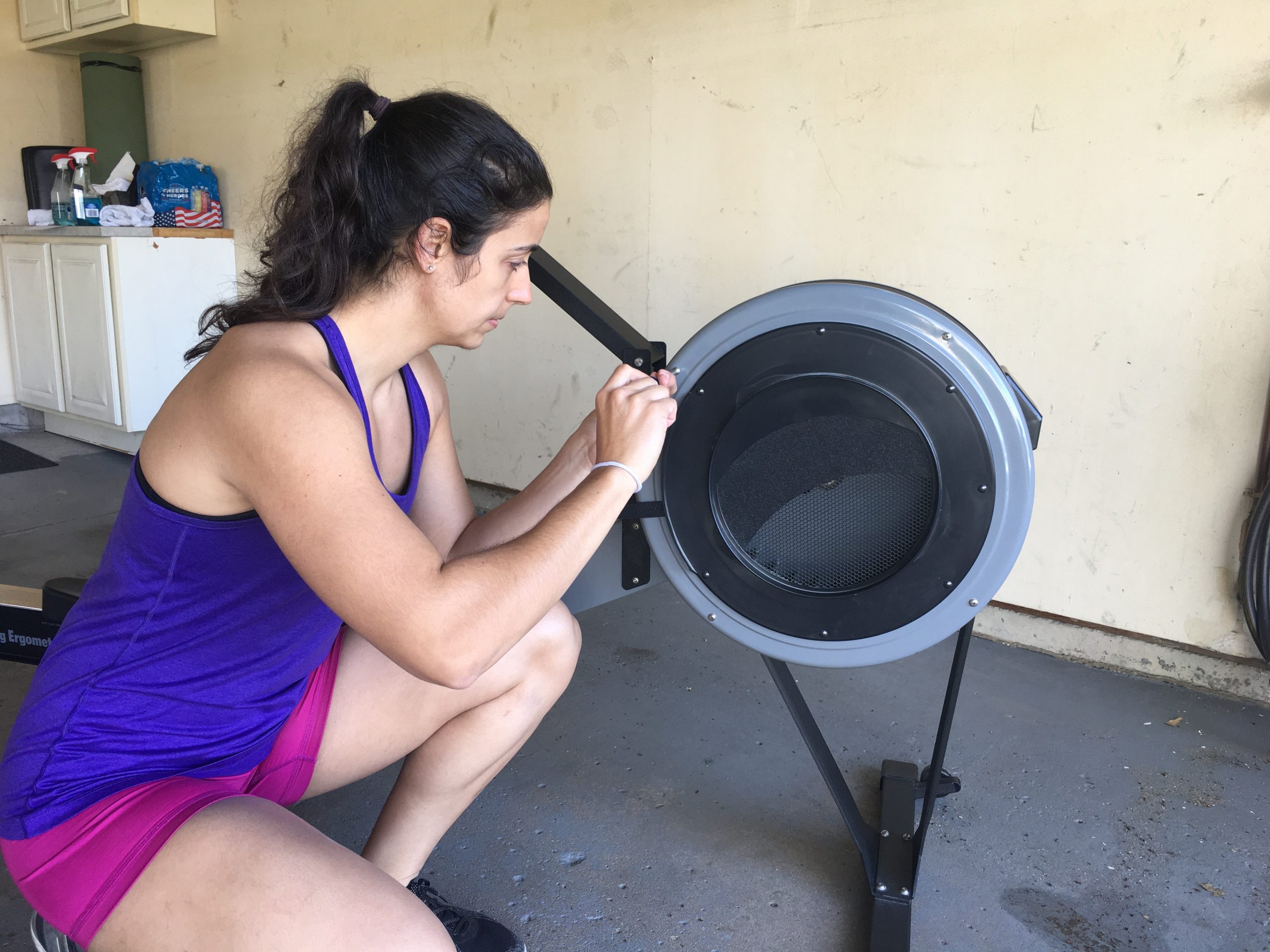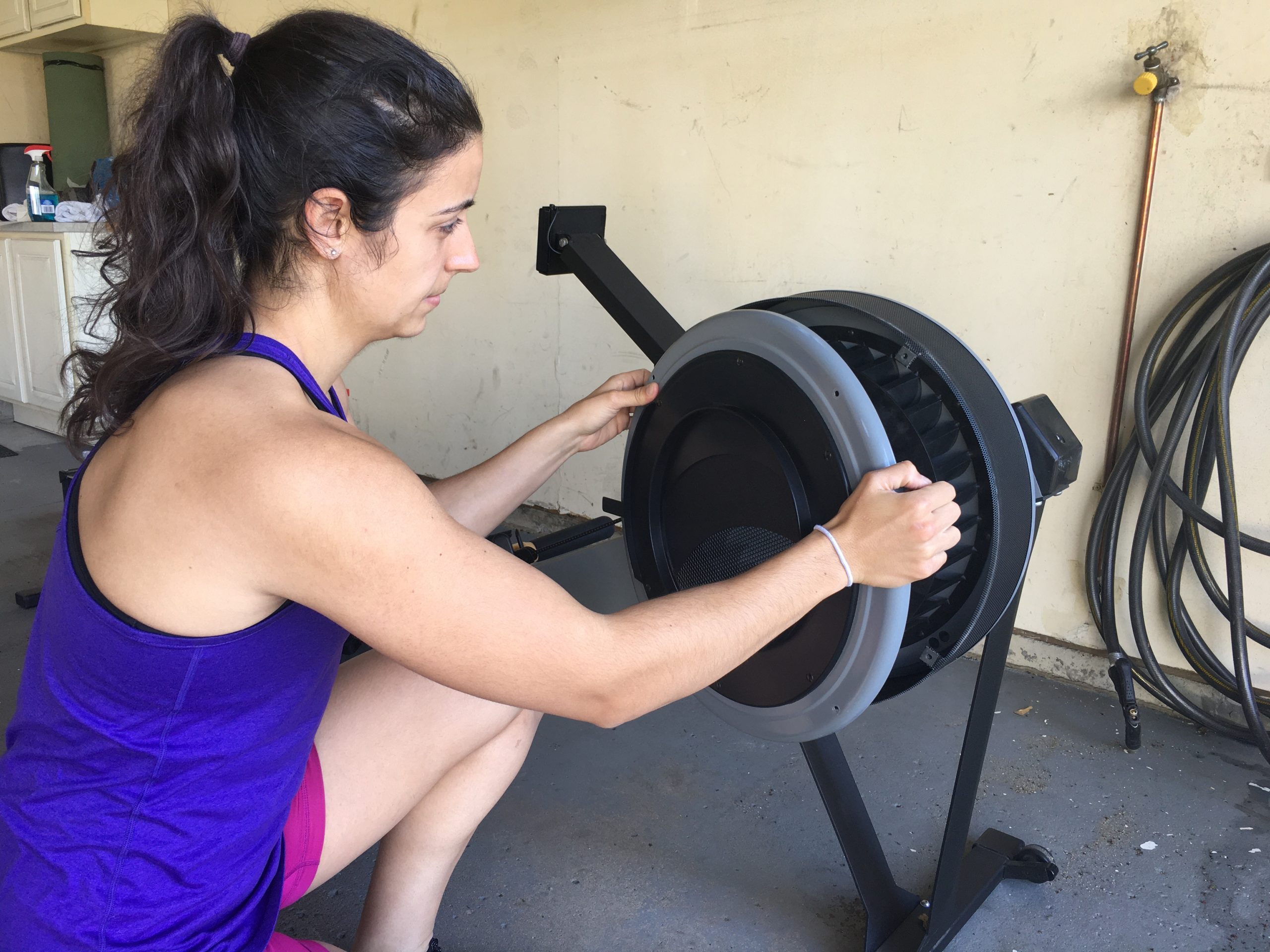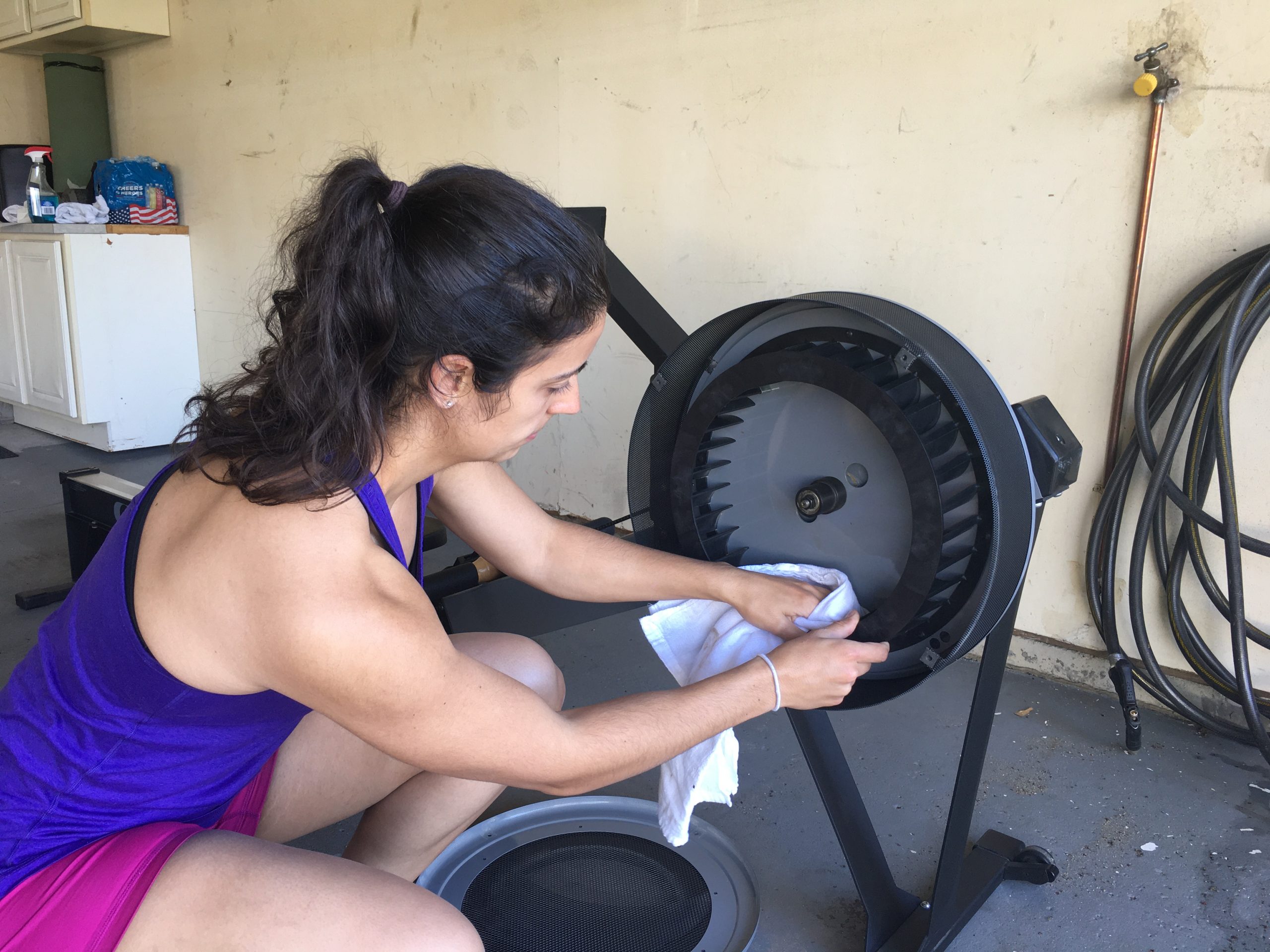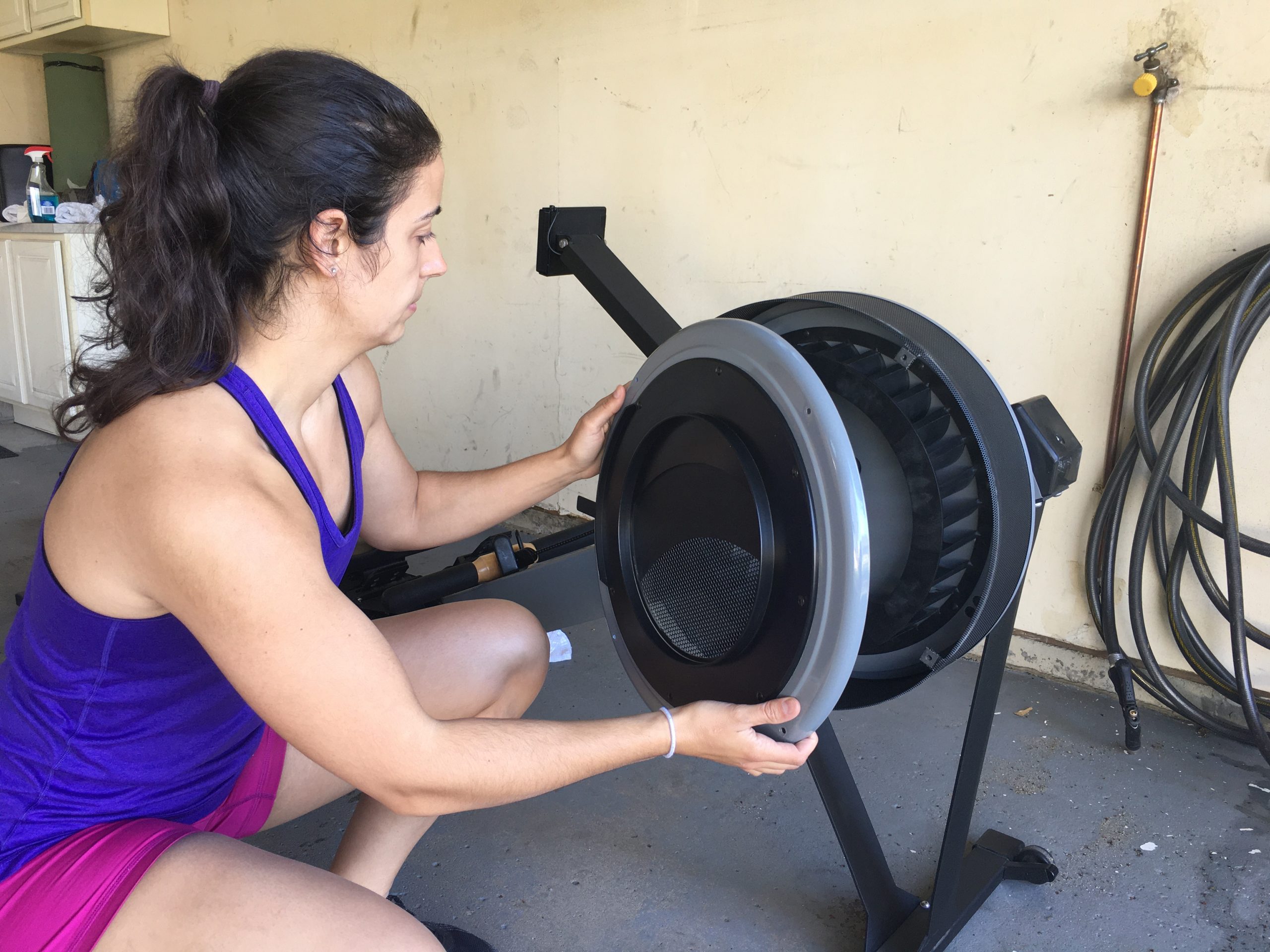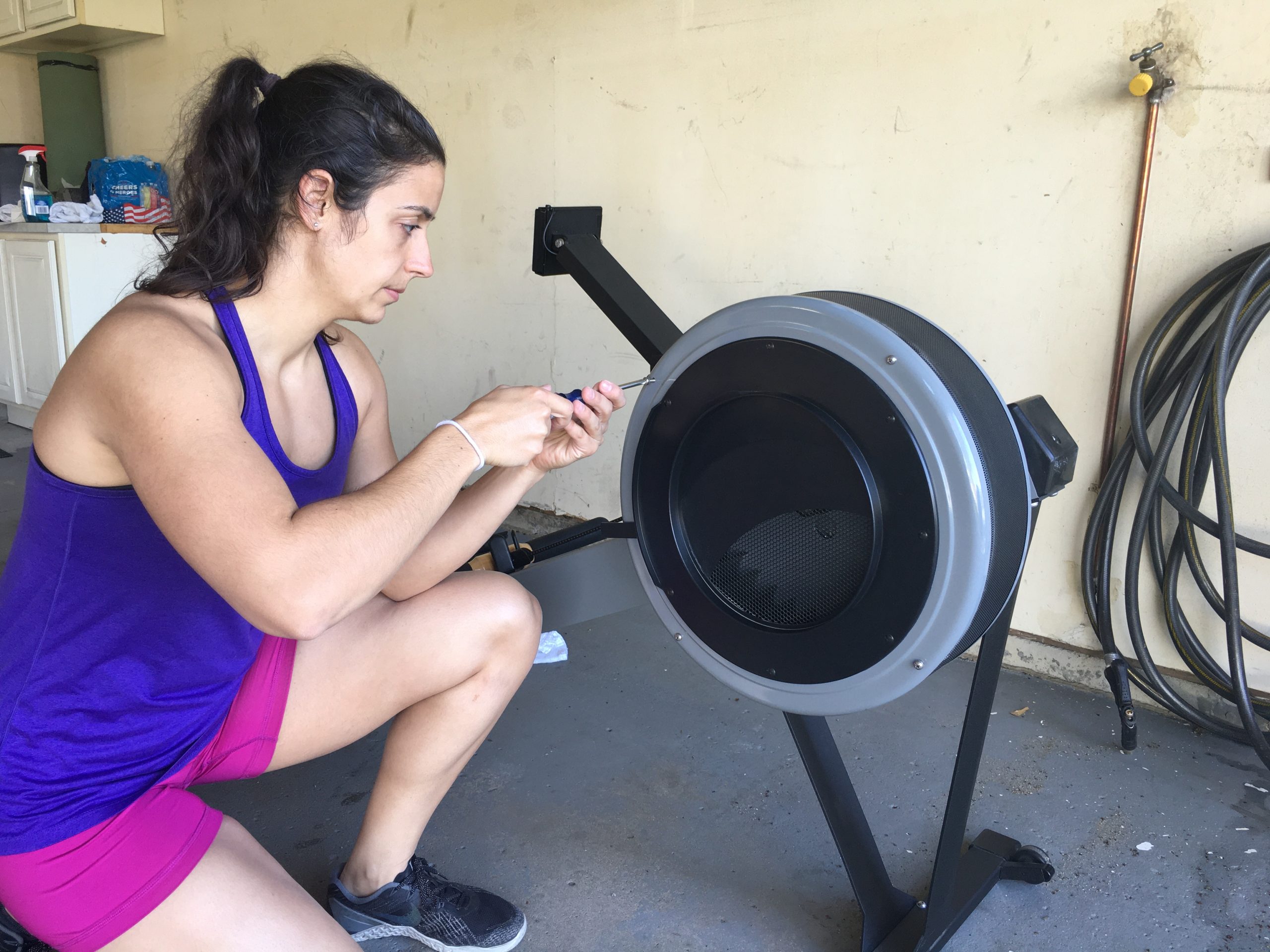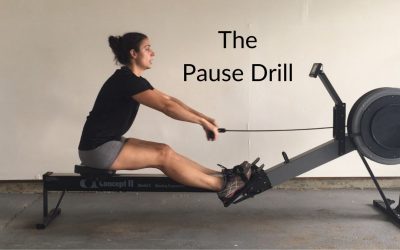Cleaning Your Concept2 Rower
Maintenance on your Concept2 rowing machine is one of those things that’s easy to forget but is well worth your time. It doesn’t take long, and will greatly increase the life of your machine. Concept2 really did us all a favor with how easy it is to maintain these machines. It’s much easier than you may think.
Concept2 model C, D, and E machines are all very similar in the maintenance they require. If there are any differences between the models, I will mention it in the following sections.
In this article, I am focusing on maintenance, not diagnosing problems with your rower. This maintenance is what you need to do even if your machine is in perfect working condition. Doing these things will keep it running that way!
AFTER EACH USE
Every time your rower is used, it should be wiped down. This may seem excessive, but getting into this habit early on is worth it.
The seat and the handle see the most grime from us, so use a disinfectant cleaner on those. You can mix ¼ cup of bleach in a gallon of water and put that into a spray bottle or use a store-bought version if you’re averse to bleach. You can spray these parts directly, and wipe off with a cloth. The screen and buttons also need to be wiped down but don’t spray the electronics directly. Spray the cloth first, and then wipe down the screen.
The monorail also needs to see some love. This part of the machine is easy to forget, and often the part I see the dirtiest. Clean the monorail with a cloth, and you can use water with soap or any glass cleaner. Do NOT use your bleach solution or abrasive cleaner on the monorail.
In general, it’s good to wipe down the whole machine with your cloth after each use. Try to get as much dust off around the wheel, but don’t forget those foot stretchers too every so often.
This frequent maintenance will keep your machine looking sharp, whether that’s in your garage or in your gym.
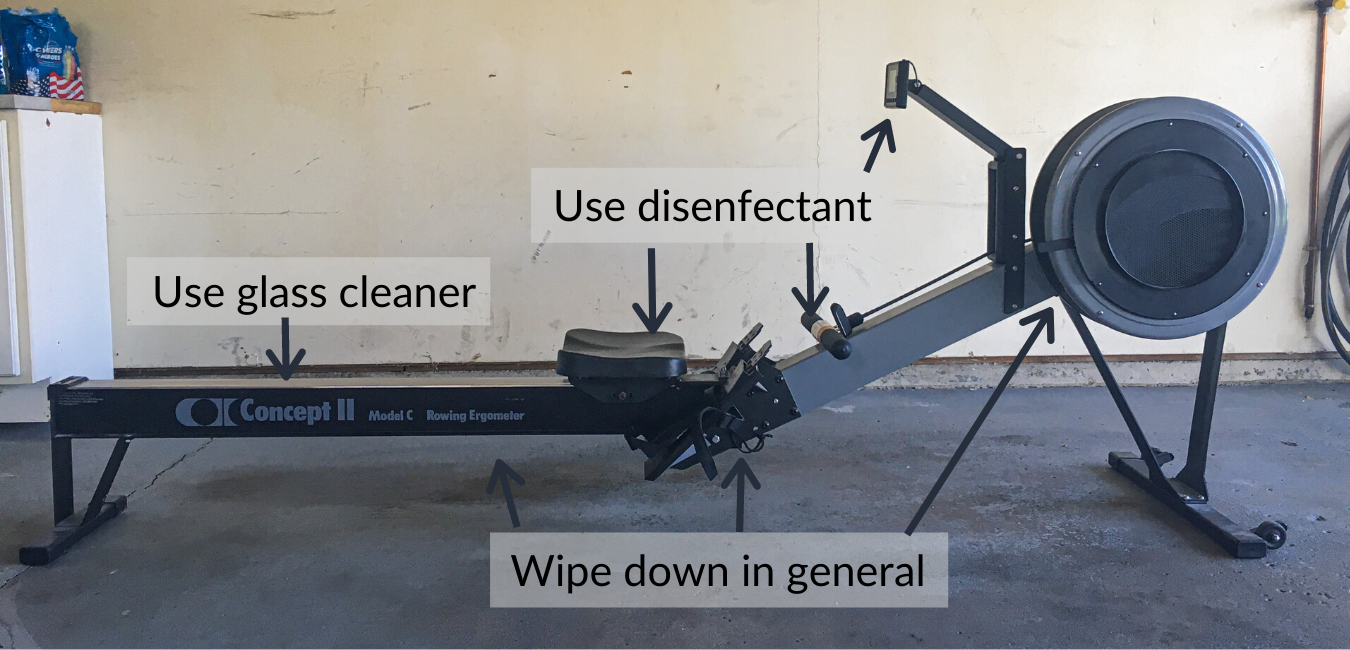
PERIODIC MAINTENANCE
Cleaning your rower after each use is well worth it, but there’s more.
There are two main things to remember to do every so often with your rower, and that’s oiling the chain and cleaning the flywheel.
Concept2 recommends oiling the chain after 50 hours of use. For gyms where the rower is used often, that could be weekly or every other week depending on the usage. For home gyms, that would be closer to monthly if you use the rower every day, or every 3 months if you use it periodically.
Standard 3-in-1 oil that you can get at pretty much any hardware store (Lowe’s, Home Depot, Amazon, etc) will do. You will also need a friend for this as well. Do NOT use cleaners like WD-40.
One person will take the handle and back up until as much of the chain is out as possible. Then the other person put some oil on a paper towel and wipe down the chain. Make sure to wipe off any excess. Once this is done, have one person take a couple of strokes on the machine so the oil can be distributed into all the nooks and crannies of the chain.
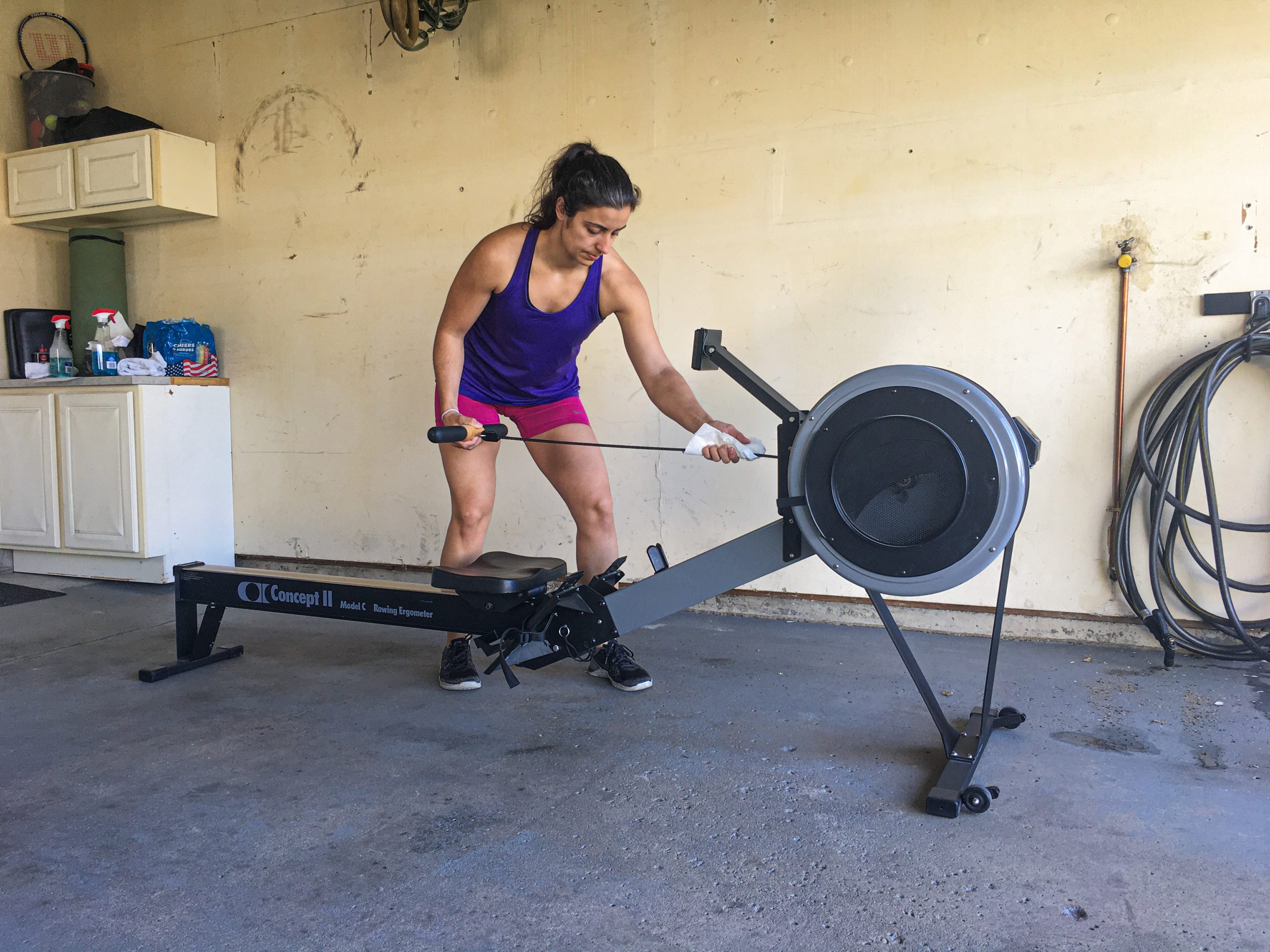
Cleaning the flywheel is up next. You’ll want to check for dust at least a couple of times a year. For some that might be every 3 months, and for others every 6 months. It really depends on how often you use your machine. If you own a gym where the rowers are used often, you may need to check for dust monthly.
Getting rid of the dust inside of the flywheel will help the rower to function more properly. When there is dust in the flywheel, there is less air. This means that with more dust, you’ll need to increase the airflow to get the same drag. You’ll find that you have to put your drag setting on the flywheel higher and higher to achieve the same resistance.
Model C rowing machines have a slightly different design to remove the flywheel than the Model D and E rowing machines. The pictures below are of a Model C rowing machine. For better instructions on how to clean a model D and E rowing machine, see this video.
- Loosen each screw around the housing. Go back around and remove each screw.
- Remove the outer panel to see the flywheel.
- Use a vacuum to get the dust out, or use a cloth and wipe it out.
- Put the outer panel back on.
- Tighten the bolts uniformly as you go around.
You may be surprised to find that you can now put your drag setting lower in order the achieve the same resistance (or drag factor) you were before cleaning your machine.
Wait, There’s Cake?
I’m pretty sure I’ve said this at some point in my rowing career. Unfortunately, the response from my coach was “nope! Just cut the cake drill”. I’m not sure anyone knows why this drill is named that. I mean, it always makes me hungry! Joking aside, the cut the cake...
Take Your Feet Out
I'm pretty sure anyone who has tried rowing with their feet out has decided it’s their least favorite drill. Which must mean it’s a good one, right? Rowing with your feet out reveals when you are relying on the foot straps. When you rely on the straps, you’re pulling...
The Pause Drill
Another week, another drill. The pause drill is exactly what it sounds like. You pause in the middle of your stroke at certain places in order to achieve a specific technique fix. For example, if you bend your knees early on the recovery before the hands are extended...

